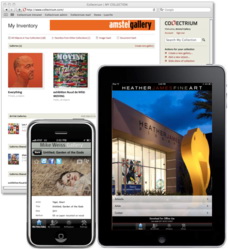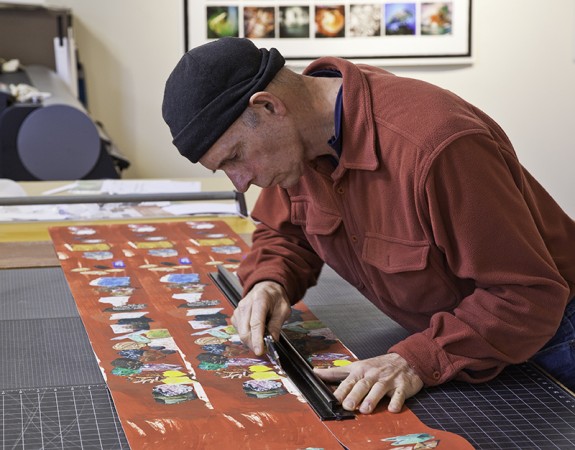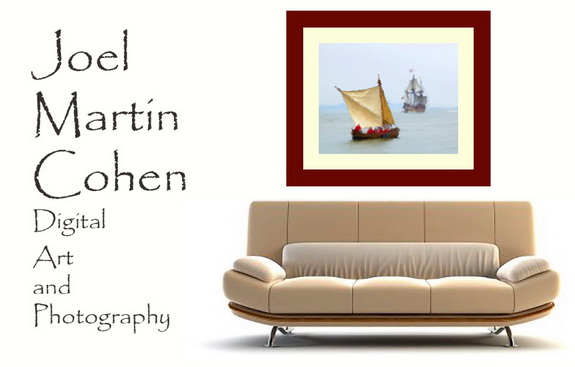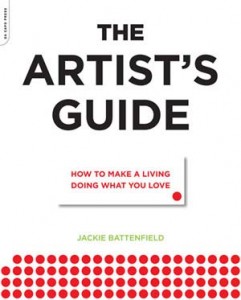An informal survey of online press releases, trade-show topics, and market-research reports indicates which art-market trends and technologies are likely to gain momentum in 2012. Let me know what you think about some the trends I have listed here, or if I’ve overlooked any major developments.
More artists are integrating technology into the process of making art.
“Cyberarts” is defined as any artistic endeavor in which computer technology is used to expand artistic possibilities. The cyberarts movement definitely appears to be growing, as artists experiment with different kinds of apps, motion graphics, augmented reality, and various forms of mixed-media printing.
Artist Dan Hermes has written several informative blog posts about “moving paintings,” which are also known as video paintings, dynamic paintings, ambient paintings, moving digital paintings, and ambient video. Increasingly, these paintings will be designed for display in residential or commercial interiors, on either flat-screen TVs or as projection installations
Dan Hermes was one of several artists who exhibited “dynamic digital imagery” at the 2011 Cyberarts Festival in Boston.
Elliot Grey has posted a YouTube video explaining his approach to “Cinematic Digital Painting,” which turns your television set into a canvas.
Interest in iPhone art is also rising. More than 3,000 iPhoneography artists gather on the website iPhoneArt.com to discuss their work, collaborate, and share what they have made. Cofounders Daria Polichetti and Nathaniel Park are dedicated to creating exhibition opportunities, financial support, international recognition, and promotional opportunities for iPhone artists.
As our homes, offices, and public spaces become increasingly screen-filled, many art lovers will treasure the tactile substance and presence of physical art objects. Thus, mixed-media printmakers such as Bonny Lhotka (author of the book Digital Alchemy) are teaching artists how to create art by combining digital techniques with traditional hands-on methods. Lhotka has developed methods and materials for transferring inkjet-printed digital images onto a variety of substrates such as aluminum, acrylic, birch, fresco, stone paper, and aged metal. Some of Lhotka’s works are currently displayed in the “Digital Darkroom: Exploration of Altered Realities” exhibit at the Annenberg Space for Photography in Los Angeles.
Efforts to expand the base of new collectors will diversity and intensify.
Online galleries of all types are experimenting with many different ways to help more people discover and buy more affordable art.
Artspace, which partners with some of the world’s most renowned art institutions, is positioning itself as “an online art advisor.” One of their goals is to enable collectors and art enthusiasts to discover and collect art from renowned contemporary artists as well as emerging talent at prices ranging from $200 to $10,000.
An article in the December, 2011 issue of Wired magazine profiled the founders of Art.sy, who have created a formula for finding art that matches your personal tastes. They have lined up relationships with more than 180 galleries and are striving to make Art.sy accessible to the average art fan, in ways that art advisers are not. The service is trying to be “an omniscient art historian for the entire world—no matter where you live or how much money you have.” The article notes that right now only a tiny fraction (perhaps 4%) of the fine-art trade takes place online, and the global market for fine art and antiques is estimated at roughly $60 billion a year.
Efforts to expand exposure opportunities for artists are happening at all levels. In December, the Light Space & Time Online Art Gallery launched a YouTube channel that presents moving slideshows of the previous online exhibitions.
Collectors and galleries will use high-resolution LCD panels to display collections of artwork.
At the Miami SOLO show presented by Artexpo, Planar teamed up with Samsung Semiconductor to display works by 30 emerging artists on Samsung’s new “SM’ART” gallery frames. These LCD panels have much higher resolution than television screens, making it possible not only to reproduce the original colors in a painting, but also the textures.
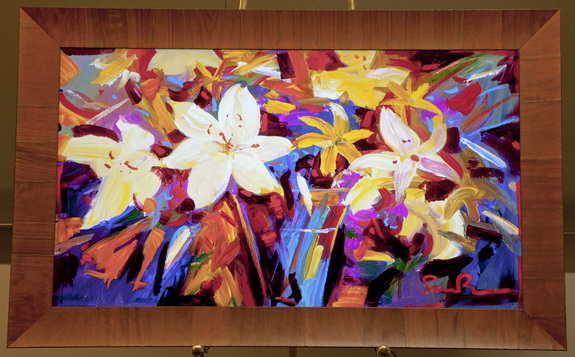
According to a Samsung product manager, the panels will also be much simpler to operate than a TV. There won’t be wires and cables hanging out of it, and the controls will operated either by tablet computer or smartphone.
Ultimately, Samsung and its partners envision the creation of a cloud-based art-gallery database that will include high-resolution scans of paintings or original digital art (such as moving paintings and dynamic digital imagery).
Just as e-bookstores and iTunes have opened up markets for new writers and musicians, the art database would enable buyers to discover works they might otherwise never be able to see in big-city brick-and-mortar galleries.
After buying art from the database, people can display one image on the SM’ART screen for months without adverse affects to the screen. Then (without having to rehang a new frame), they can use the panel to show new pieces that reflect the changing seasons, décor, or event themes in hotels and reception areas. People will own art purchased from the database, so they can port it to new screens as display screens continue to improve.
More art is being displayed outdoors and in non-traditional venues.

You don’t have to visit a museum or gallery to see art. As demonstrated by projects such as The Streaming Museum and The Billboard Art Project, you can see art displayed on screens in public squares or on digital billboards traditionally used for advertising.
The Art Prize festival/competition turns the entire city of Grand Rapids, Michigan into an art gallery. Last year, more than 160 venues (including office lobbies, restaurants, courtyards, and parks) displayed the works of 1582 artists hoping to win some of the $498,000 in prize money (including $250,000 for first place). The 19-day event attracted 320,000 visitors and provided a $14.5 million boost to the local economy.
Entrepreneurial artists are using websites and social media to get exposure.
The days of sitting idly by and hoping to get discovered have vanished for all creative professionals. Many are going online to build relationships and using SEO (search-engine-optimization) techniques to increase the odds of being discovered.
More and more artists are promoting themselves through online press releases, social media, self-published books, and apps. Art business coaches and organizations such as the Institute of Arts Entrepreneurship are helping artists be more proactive in creating opportunities for themselves.
In December, artist Colin Goldberg introduced an app that enables iPhone and iPad users to use some of his original art as wallpaper for their screens. The app can also be used to order prints of some of his images through his gallery on etsy. He used an online press release service to announce the availability of the app.
In a blog post about “A Tale of Two Unhappy Artists,” John Math of the Light Space & Time online gallery told the story of two artists who wondered why they weren’t selling more art. One artist complained that even though he had won several competitions, their art sales were still poor. John Math observed that he didn’t have an attractive website or social media links. Furthermore, he hadn’t even bothered to announce on his website that he had won the competitions.
“It is evident to me that no one would know about this artist, based on the lack of press releases, social media networking, and any ongoing promotions,” said Math. “In addition, his website did not contain any associated article content that would help draw anyone to his website. Consequently, his website traffic was poor and he was frustrated.”
Math noted that “Many artists will embark on a marketing campaign, not see any results quickly and then give up their efforts. It is the artist who markets their art on a continuous and consistent basis who achieves successful results.”
Send Me Your Stories
If you have stories, news, or ideas related to any of these trends, we would love to hear from you! Send ideas for articles or guest posts to: eileen (dot) fritsch (at) creativesatworkblog (dot) com.


